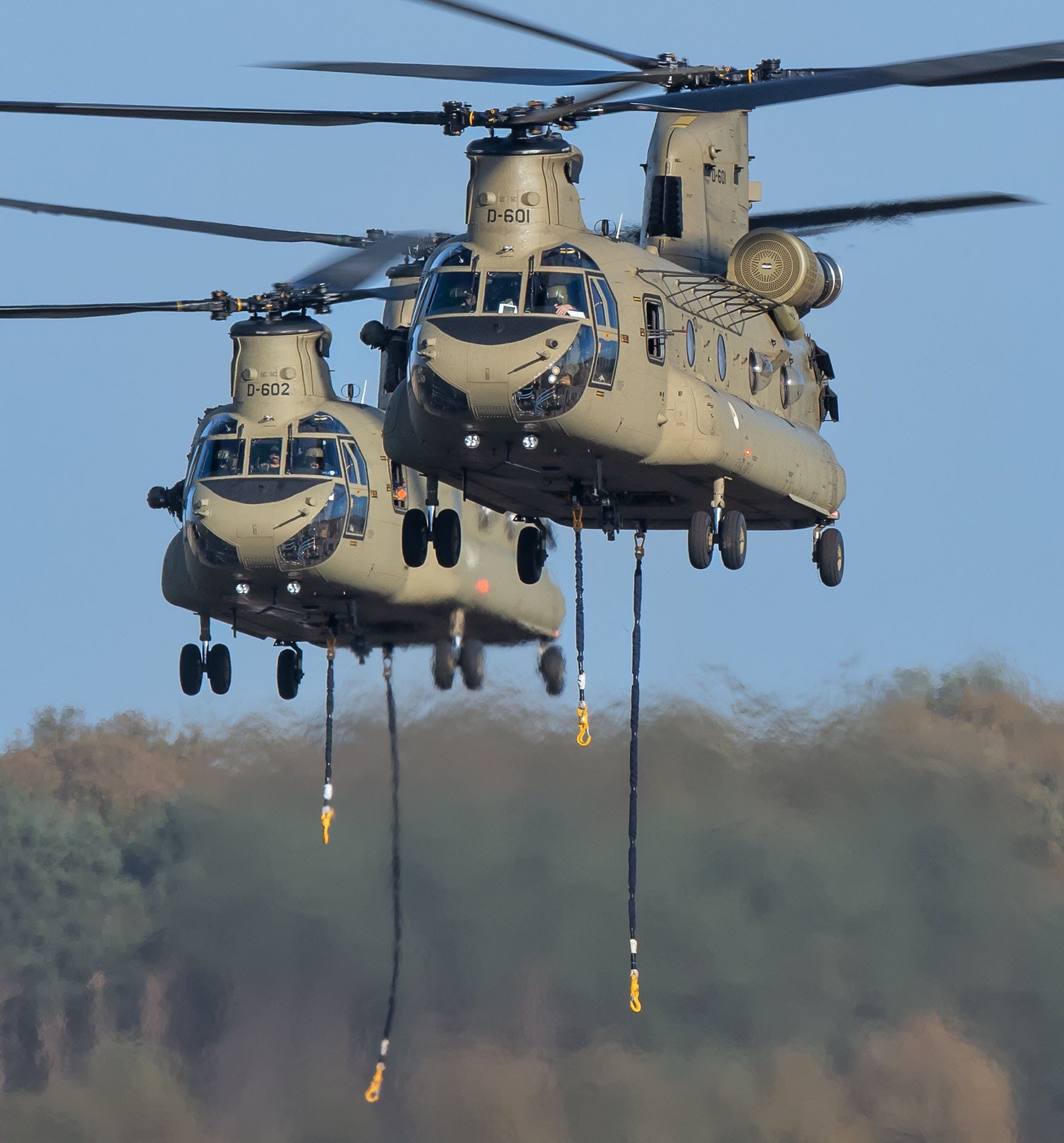While large numbers of military helicopters cruise low-level through Dutch skies, the calendar on the wall displays the last quarter of the year. This can't be a coincidence: exercise Falcon Autumn must be up and running.
Text and photos: Emiel Sloot (unless stated)
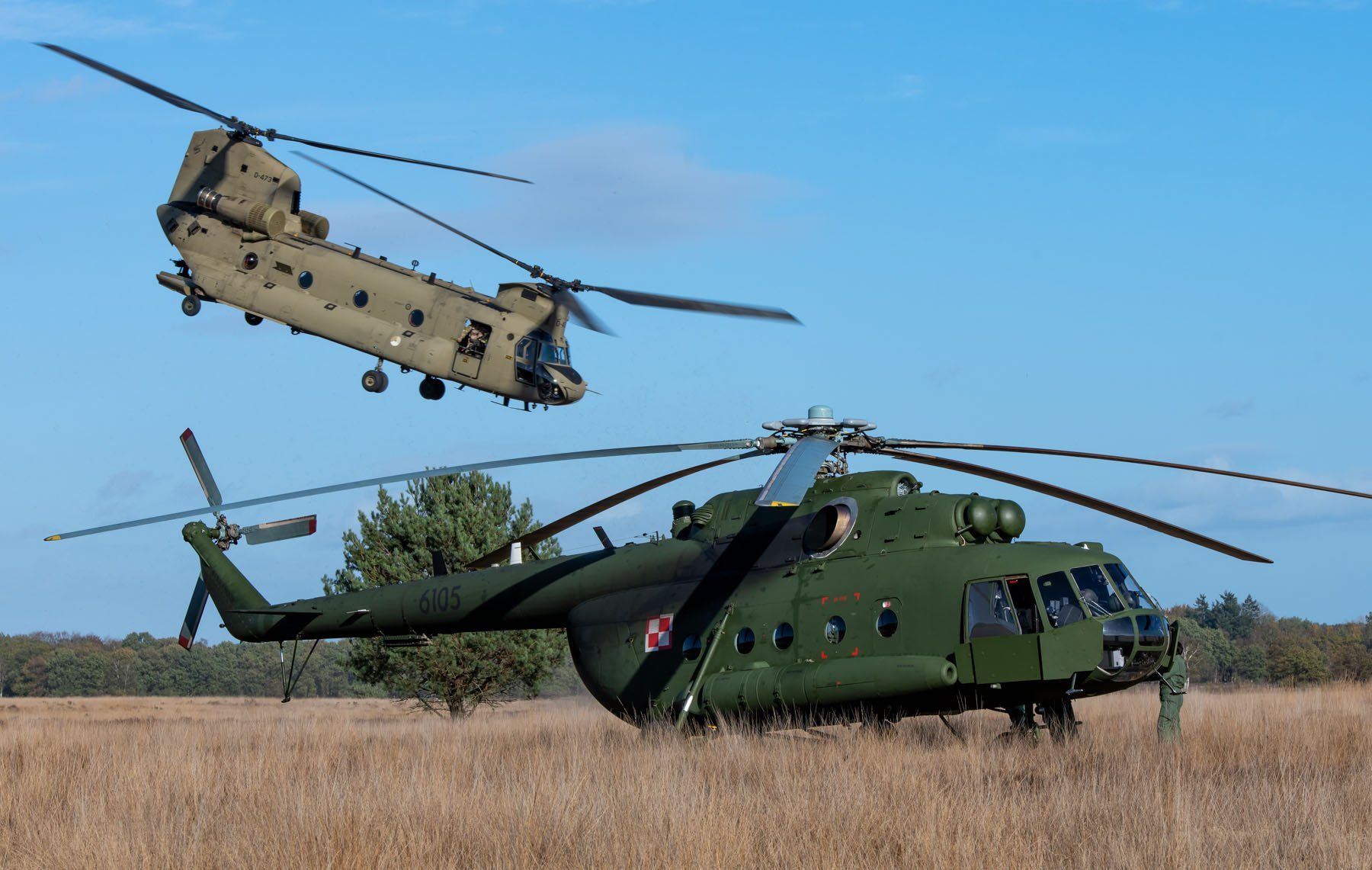
From 31 October till 18 November 2022, the latest edition of this joint air and ground exercise took place. Several complex training scenarios were designed by both the 11 Air Assault Brigade of the Royal Netherlands Army and the Defence Helicopter Command, the Royal Netherlands Air Force unit responsible for all rotary wing operations by the Dutch military. When these two specific units combine their operations, they form the 11 Air Manoeuvre Brigade. This composed unit will then be ready for worldwide deployment and action within 20 days; smaller units can be dispatched even quicker.
Though hosted by the Netherlands, participation was international. Lieutenant Colonel Roy Hemmelder, Commander Air Task Force during Falcon Autumn 2022, explains the goal of the exercise in a press release: “In the complex world in which we live, international defence cooperation is of increasing importance for maintaining peace and security. The security situation calls for units that can be deployed internationally in the very short term. This places high demands on the ability to cooperate with units from different countries.”
Therefore, aviation assets from abroad joined the event. The Polish land forces sent one Mi-17 and two Mi-8T transport helicopters along with support, while the United States Army made available six AH-64D Apaches, eight UH-60M Blackhawks and five CH-47F Chinooks, all belonging to the Germany-based 12th Combat Air Brigade. The American contingent only participated in part of the exercise though, due to other commitments.
“By training and working with international partners, we improve our collaboration and the ability to act quickly together when the situation calls for it. We will do this together with these Polish and American helicopter units during Falcon Autumn,” Lt Col Hemmelder added.
Falcon Autumn exercises simulate the defence of national and Alliance territory in a collective environment that reflects realistic conditions, and prepare participants for multinational or coalition operations. Furthermore, in the 2022 edition, the 13 Infantry Battalion (Air Assault) that reports to the 11 Air Assault Brigade, became certified for tactical air manoeuvre missions, employed in large-scale airdrop operations together with their Polish and U.S. colleagues.
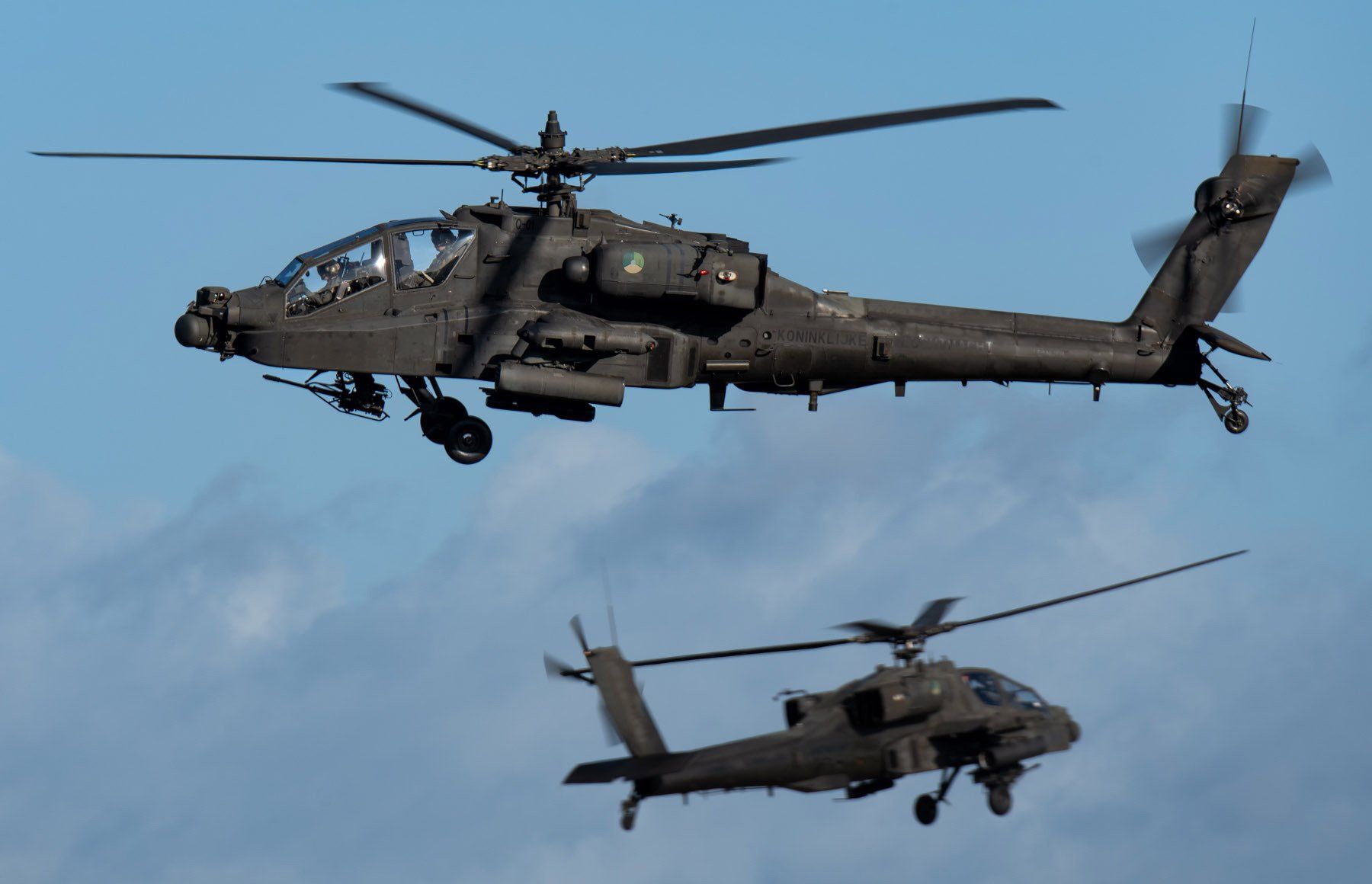

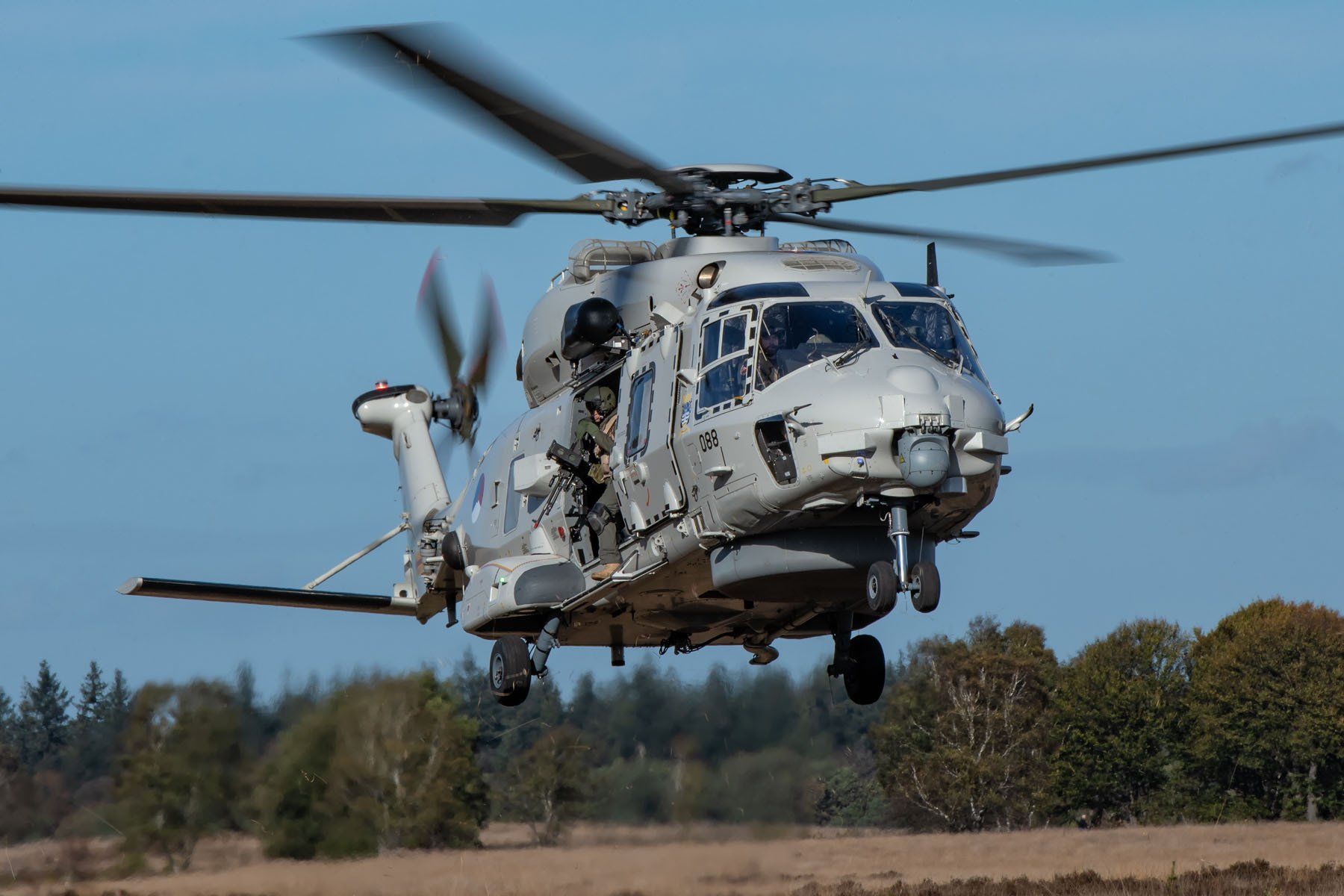
Before highlighting some exercise details, first a brief peek into the past. In its 30 years of existence – the 11 Air Assault Brigade was created in 1992 – it has participated in several international operations such as SFIR (Stabilisation Forces Iraq), ISAF (International Security Assistance Force) in Afghanistan, and MINUSMA (UN Multidimensional Integrated Stabilisation Mission in Mali). Of course, to reach operational and certified levels in order to prepare for and execute such demanding missions, training and exercising is key.
The first large Falcon Autumn exercise in the Netherlands was held in 2011, and one of the major goals was to re-establish full air assault capacity of the 11 Air Assault Brigade. Deelen air base was the main deployment area, from where Dutch Chinooks (then -D variants), Cougars and Apaches operated over assigned exercise areas in the northern part of the country, mainly around Assen and the Marnewaard.
While the 2011 edition only featured Dutch helicopters, the follow-up Falcon Autumn exercise that took place five years later involved NH90-TTH and Tiger UHT helicopters from the German Heeresflieger. This time, the focus was directed at targets located in the southwestern province of Zeeland. In 2018, Deelen was again the main operating base – once again with the participation of German Army NH90-TTH transport helicopters – and operations were conducted mainly over the central and northern parts of the Netherlands.
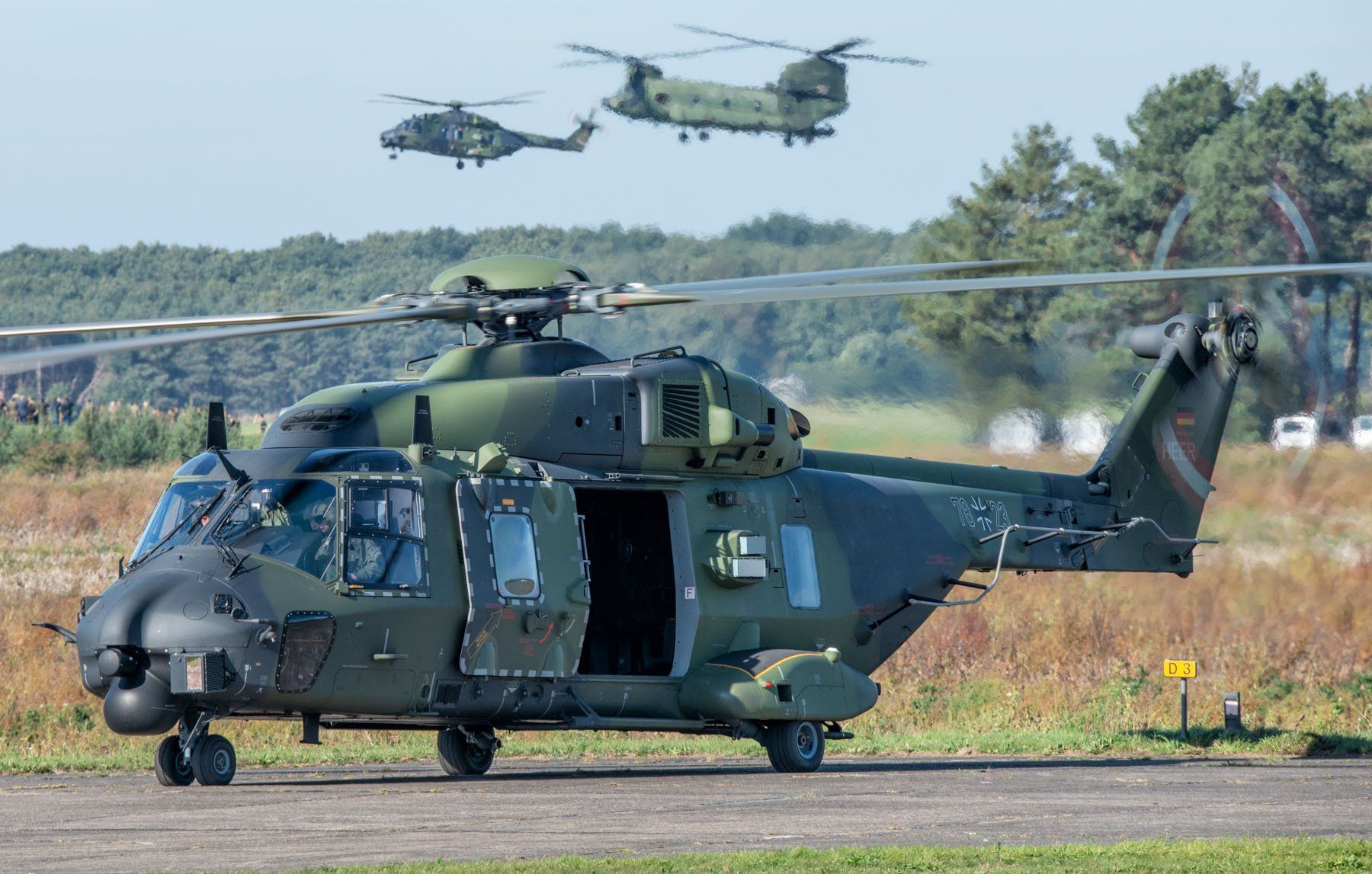
Fast forward to 2022. On this occasion, all helicopters operated out of the Lieutenant General Best Barracks, the former air base at De Peel, although this airfield is currently being considered for reactivation to facilitate F-35A Lightning II to relieve operations at Leeuwarden and Volkel. The Defence Helicopter Command deployed four CH-47F Chinooks, two AS532U2 Cougars, four AH-64D Apaches and two maritime NH90-NFHs, so together with the Polish and US ones, no less than 34 helicopters – along with some 1,000 personnel – were involved in various scenarios with embedded exercises.
During the first week, many practice flights were carried out over the central part of the Netherlands, and included operations over GLV IV near Ede, one of ten GLV low-level flying areas in the Netherlands available to the DHC. A Forward Area Refuelling Point (FARP) was also set up here, that would be active throughout the exercise. Nearby Deelen air base acted as a forward operating base, with the 11 Air Assault Brigade conveniently housed right next door. Sling practice was carried out at Deelen, that also housed a FARP. The Arnhemse Heide, immediately east of the base, occasionally housed an additional FARP, while at De Peel, a team of the US Army's 214th Aviation Regiment organised a similar facility during their presence.
The combo unit 11 Air Manoeuvre Brigade can conduct five different ways of air manoeuvre operations. Of these, air assault is the most intense kind of specialty, during which offensive operations are carried out to establish a bridgehead in enemy-held territory with the assistance of attack and transport helicopters. After the helo crews requalified themselves for various skills, the first exercise week ended in a level V air assault practice. This level, being the second highest, indicates the size of troops involved, in this case a battalion. Level VI would involve the brigade as a whole. So, for this scenario, the 13 Infantry Battalion (Air Assault) conquered and secured a designated area near Ossesluis, between the cities of Meppel and Hoogeveen. The day after, all troops and their equipment were extracted from that location by air, back to Deelen and De Peel.
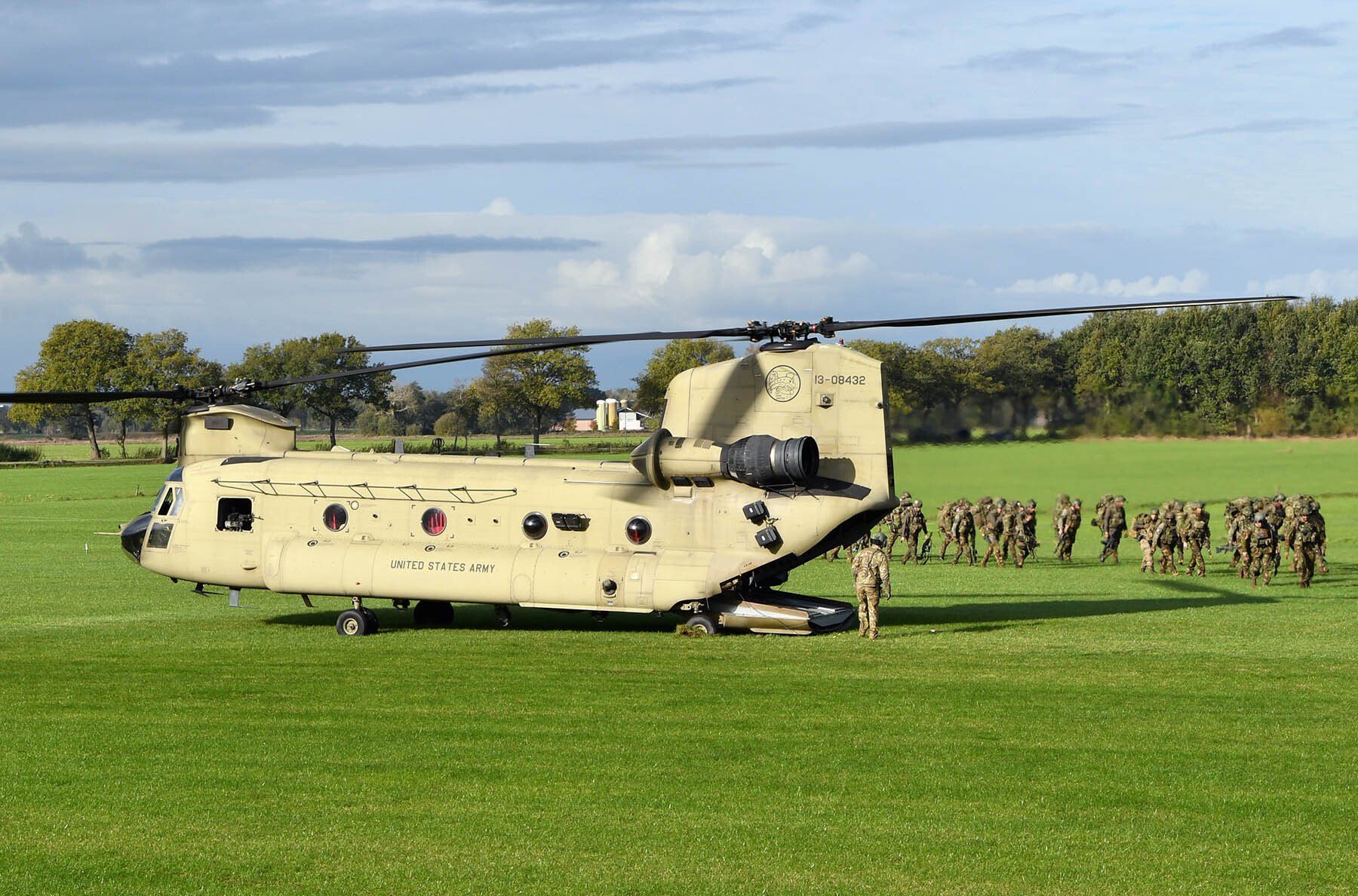

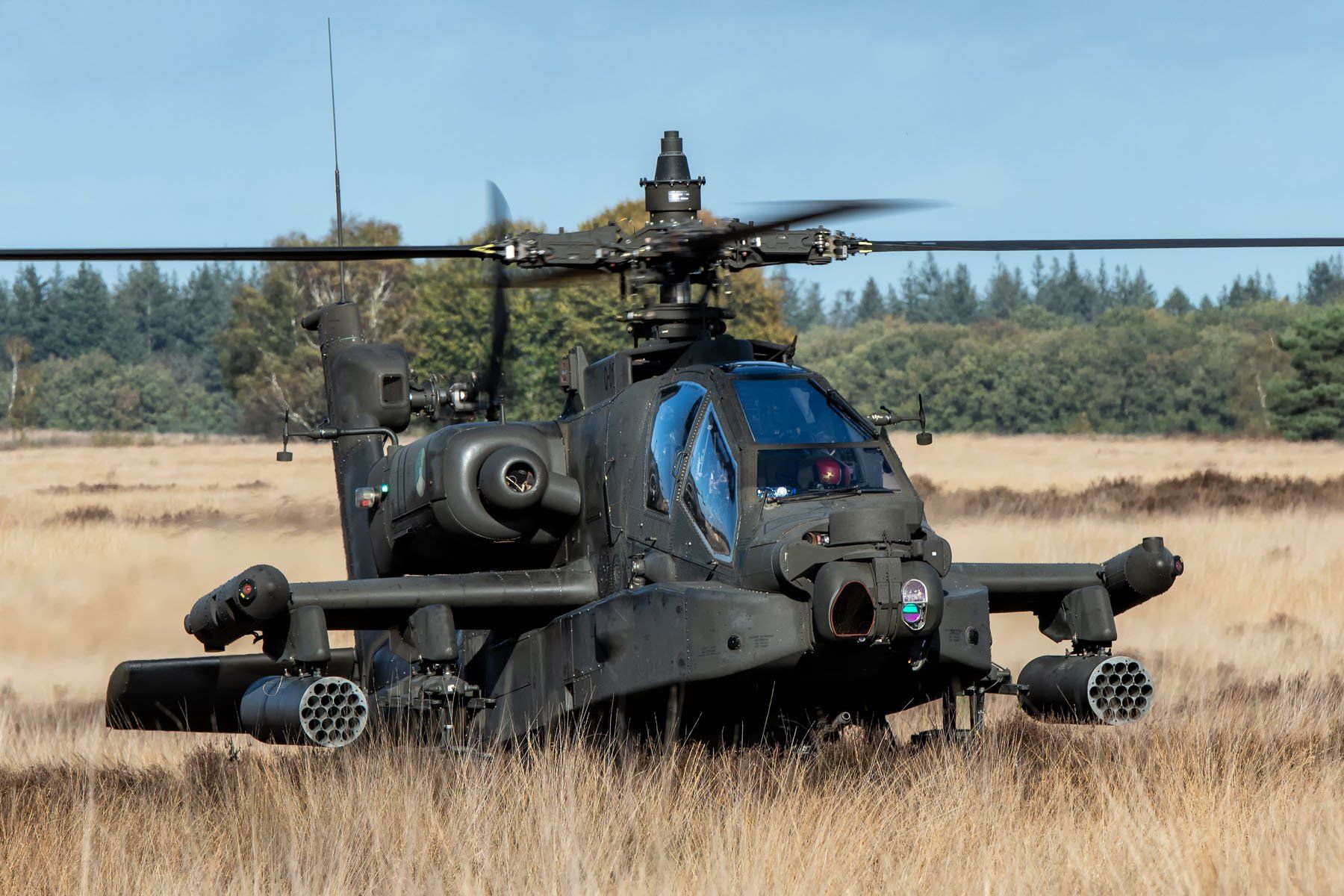
For the second exercise week, stakes were raised. This time, an airfield had to be captured from opposing forces and subsequently held for two days. The general aviation airfield at Drachten was chosen as theatre-of-operations. Following aerial observation flights covering a wide area around Drachten, a small reconnaissance party was dropped at a safe distance from the airfield. The next evening, ground troops were flown in by U.S. Army Blackhawks to a few different dropping areas, who subsequently took positions around the target. Their ultimate attack, supported by several flights of Apaches, commenced at first daylight, and after securing the area, equipment was airlifted by the participating Dutch and Polish transport helicopters, picking up the hardware at Deelen first.
Beside these larger-scale manoeuvres, Falcon Autumn featured smaller raids in which company-size parties were flown in to eliminate pockets of simulated resistance or to seize a smaller but vital object like a bridge. One such example was planned by the exercise organisers following the successful capture of Drachten airfield: after an 'enemy' stronghold at nearby Prikkedam was reported, an operation to neutralise this threat was immediately planned and executed from Drachten.
To create a realistic setting, helicopter crews had to work their way around several air defence sites. The Dutch Joint Ground-based Air Defence Command, home-based at De Peel, deployed a number of Stinger units (both Fennek vehicle-mounted and shoulder launched) in the field to simulate this threat. The war in Ukraine has clearly showed the vulnerability of helicopter operations, and training to cope with this is obviously of utmost importance.
The Drachten scenario was concluded with airlifting the troops back to Deelen. Unfortunately, foggy weather conditions messed up this part a bit, as the resulting small window of air operations did not allow the aerial retraction of most equipment.
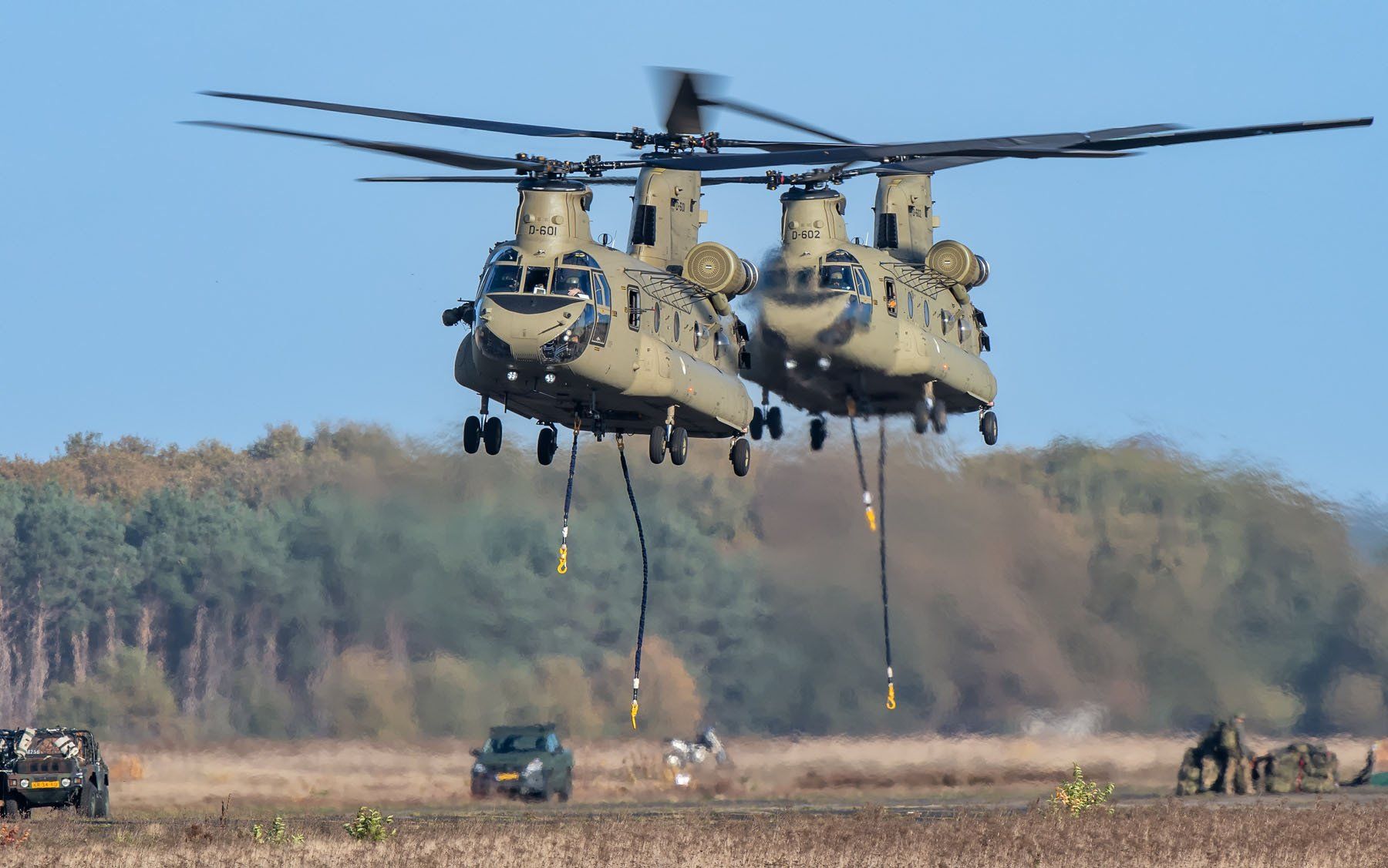
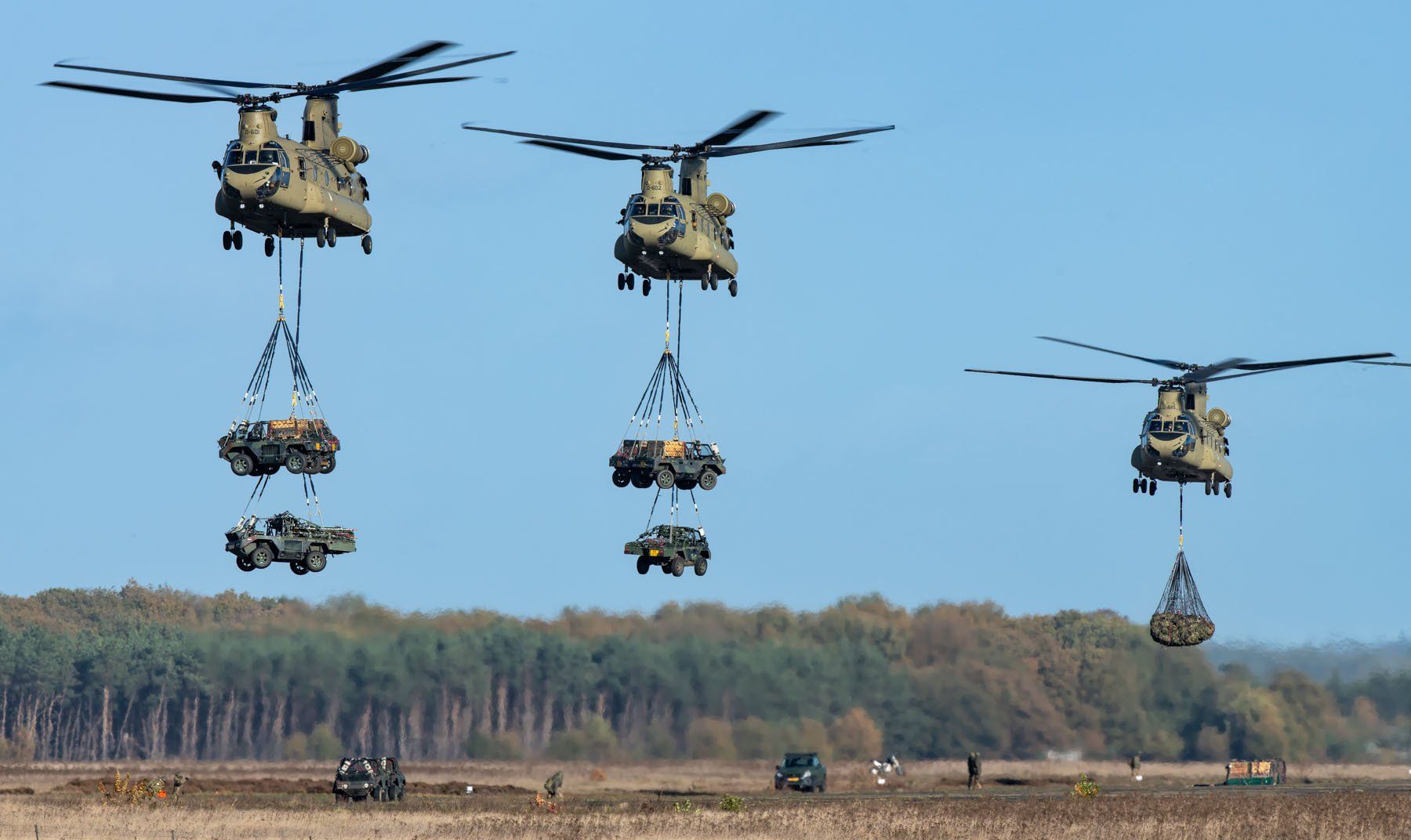

The third and last week of Falcon Autumn saw the grande finale of the exercise. This time, the former naval air base near Valkenburg – today merely a flat grassy area with little remaining infrastructure – acted as show-ground for another level V air assault exercise, all packed into a single day. This occasion would be without the air support of the U.S. Army, since their units had returned home as planned a few days earlier.
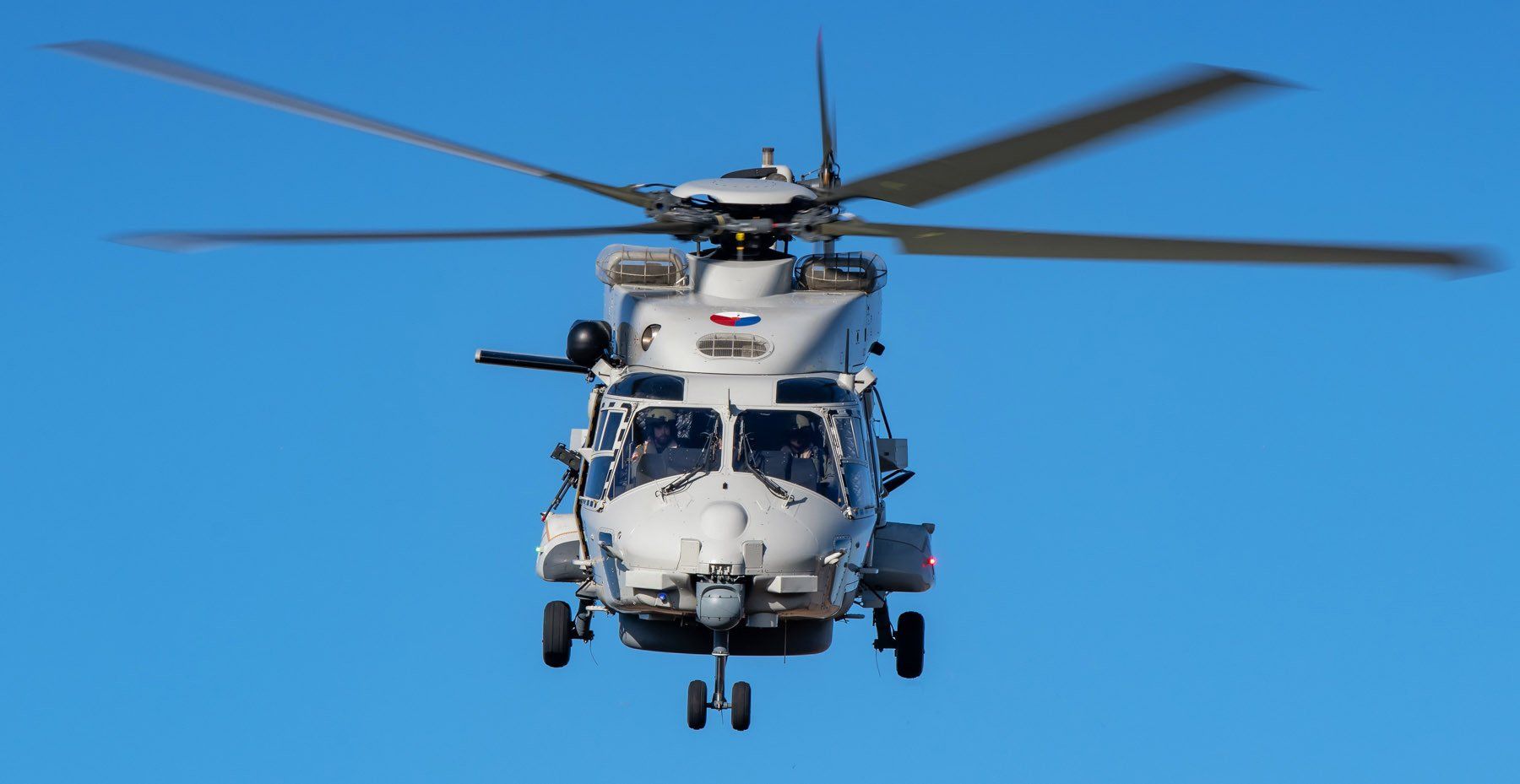
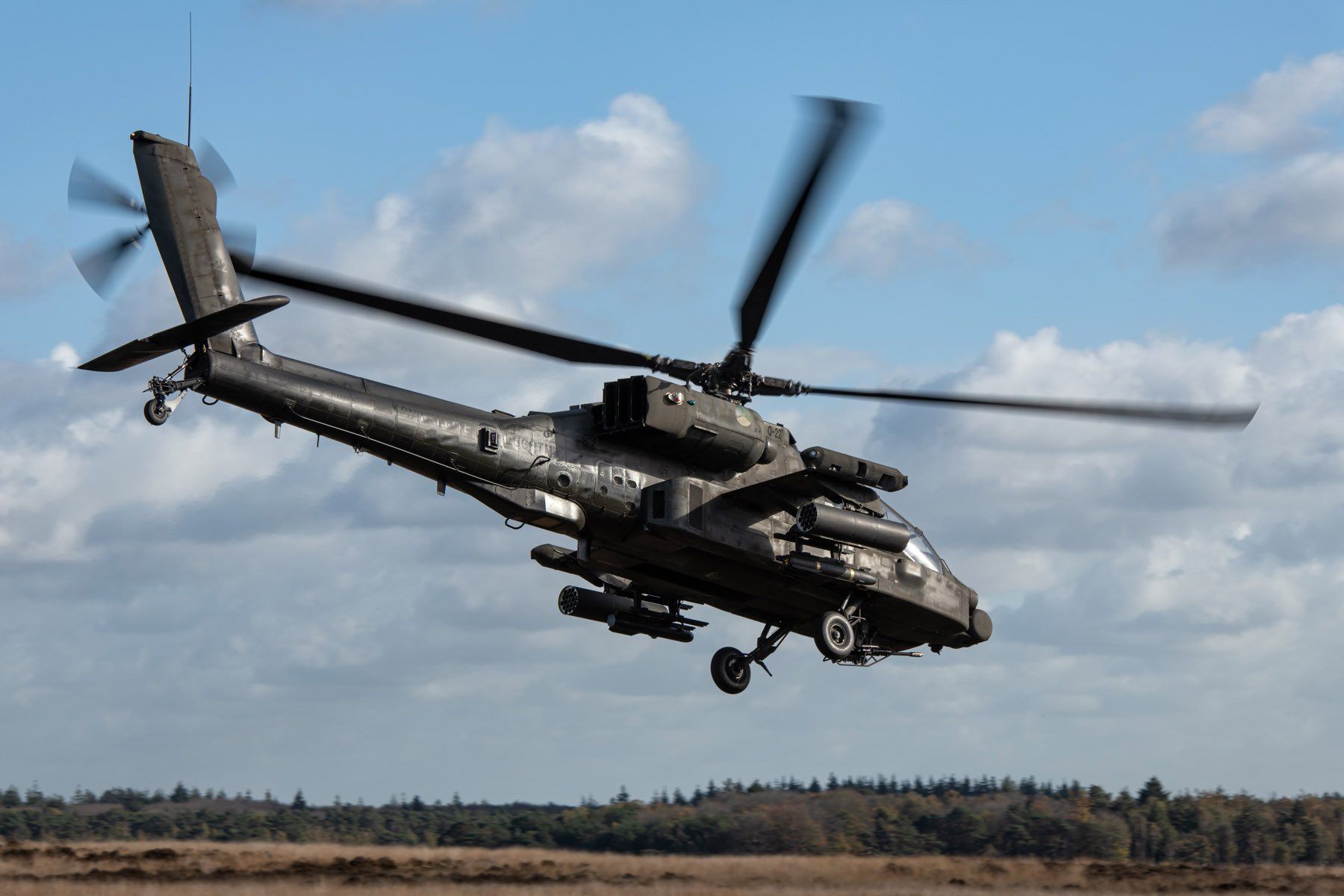
The Russian aggression in Ukraine has placed defence higher on the agenda within most if not all NATO countries. Following years of neglect, budgets have been increased to refresh stocks, replace obsolete material and improve personnel, both in numbers and their skills.
Coincidentally, during Falcon Autumn, Boeing handed over the 20th and final CH-47F MYII CAAS (Multi-Year II Common Avionics Architecture System) Chinook, with delivery expected in 2023. Just a few weeks earlier, in October 2022, the first of Dutch AH-64E Apaches rolled out at the Boeing factory in Mesa, Arizona. All remaining 28 AH-64Ds will be rebuilt as -E variants, with components either being reused or replaced. All this new hardware will provide a great boost to both the Defence Helicopter Command and the 11 Air Assault Brigade. However, keeping the numbers of personnel at the required level and train them to the highest standards, is vital. The next episode of Falcon Autumn, hosted by Poland in 2023, will be a suitable occasion to test their skills once again while the helicopter soar through the fall season. ■
The author would like to thank Major M.J. Grendel, communication officer of the 11 Air Assault Brigade, for his kind assistance.
